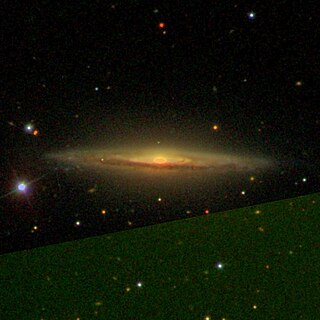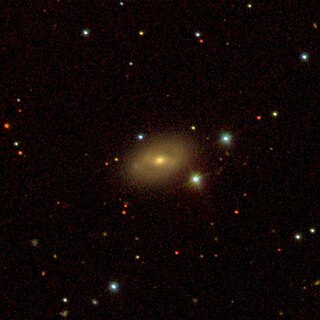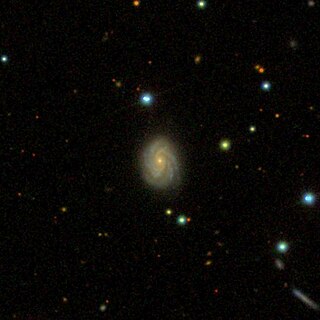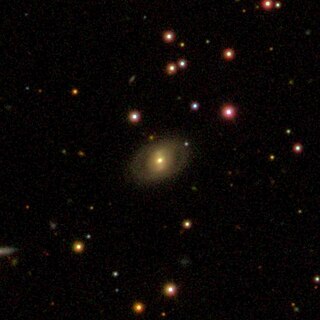This page is based on this
Wikipedia article Text is available under the
CC BY-SA 4.0 license; additional terms may apply.
Images, videos and audio are available under their respective licenses.

Circinus is a small, faint constellation in the southern sky, first defined in 1756 by the French astronomer Nicolas-Louis de Lacaille. Its name is Latin for compass, referring to the drafting tool used for drawing circles. Its brightest star is Alpha Circini, with an apparent magnitude of 3.19. Slightly variable, it is the brightest rapidly oscillating Ap star in the night sky. AX Circini is a Cepheid variable visible with the unaided eye, and BX Circini is a faint star thought to have been formed from the merger of two white dwarfs. Two sun-like stars have planetary systems: HD 134060 has two small planets, and HD 129445 has a Jupiter-like planet. Supernova SN 185 appeared in Circinus in 185 AD and was recorded by Chinese observers. Two novae have been observed more recently, in the 20th century.

Reticulum is a small, faint constellation in the southern sky. Its name is Latin for a small net, or reticle—a net of crosshairs at the focus of a telescope eyepiece that is used to measure star positions. The constellation is best viewed between October and December, but cannot be seen from middle to northern latitudes.
In contemporary astronomy, 88 constellations are recognized by the International Astronomical Union (IAU). Each constellation is a region of the sky, bordered by arcs of right ascension and declination. Together they cover the entire celestial sphere and were adopted officially by the International Astronomical Union in 1922.
Chinese star names are named according to ancient Chinese astronomy and astrology. The sky is divided into star mansions and asterisms. The system of 283 asterisms under Three Enclosures and Twenty-eight Mansions was established by Chen Zhuo of the Three Kingdoms period, who synthesized ancient constellations and the asterisms created by early astronomers Shi Shen, Gan De and Wuxian. Since the Han and Jin Dynasties, stars have been given reference numbers within their asterisms in a system similar to the Bayer or Flamsteed designations, so that individual stars can be identified. For example, Deneb is referred to as 天津四.

Constellation families are collections of constellations sharing some defining characteristic, such as proximity on the celestial sphere, common historical origin, or common mythological theme. In the Western tradition, most of the northern constellations stem from Ptolemy's list in the Almagest, and most of the far southern constellations were introduced by sailors and astronomers who traveled to the south in the 16th to 18th centuries. Separate traditions arose in India and China.
The modern constellation Triangulum Australe is not included in the Three Enclosures and Twenty-Eight Mansions system of traditional Chinese uranography because its stars are too far south for observers in China to know about them prior to the introduction of Western star charts. Based on the work of Xu Guangqi and the German Jesuit missionary Johann Adam Schall von Bell in the late Ming Dynasty, this constellation has been classified as one of the 23 Southern Asterisms under the name Triangle.
S Trianguli Australis is a yellow-white hued variable star in the constellation Triangulum Australe. It is a dim star near the lower limit of visibility with the naked eye, having a typical apparent visual magnitude of 6.41. Based upon an annual parallax shift of 1.08 mas, it is located 3,030 light years from the Earth.

NGC 684 is a spiral galaxy approximately 135 million light-years away from Earth in the constellation of Triangulum. It was discovered by William Herschel on October 26, 1786. Edward Swift, Lewis' son, found this galaxy again on 18 Jan 1890 while "searching for Swift's Comet." and it was reported as a new object in list IX-6.

NGC 805 is a lenticular galaxy approximately 194 million light-years away from Earth in the constellation of Triangulum. It was discovered by German astronomer Heinrich Louis d'Arrest on September 26, 1864 with the 11-inch refractor at Copenhagen.

NGC 1060 is a lenticular galaxy approximately 256 million light-years away from Earth in the constellation of Triangulum. It was discovered by William Herschel on September 12, 1784.

NGC 819 is a spiral galaxy approximately 302 million light-years away from Earth in the constellation of Triangulum. It forms a visual pair with the galaxy NGC 816 5.7' WNW.

NGC 739 is a spiral galaxy approximately 193 million light-years away from Earth in the constellation of Triangulum.

Arp 166 is a pair of interacting elliptical galaxies approximately 225 million light-years away from Earth in the constellation of Triangulum. The two galaxies, NGC 750 and NGC 751, are listed together as Arp 166 in the Atlas of Peculiar Galaxies.

NGC 750 is an elliptical galaxy approximately 225 million light-years away from Earth in the constellation of Triangulum. It forms a close pair of interacting galaxies together with the nearby NGC 751 galaxy. The pair is listed as Arp 166 in the Atlas of Peculiar Galaxies.

NGC 751 is an elliptical galaxy approximately 225 million light-years away from Earth in the constellation of Triangulum. It forms a close pair of interacting galaxies together with the nearby NGC 750 galaxy. The pair is listed as Arp 166 in the Atlas of Peculiar Galaxies.













